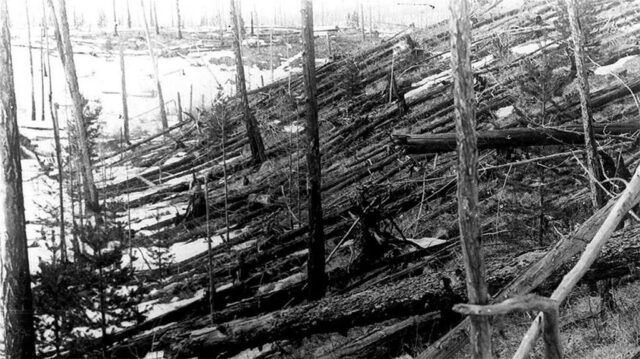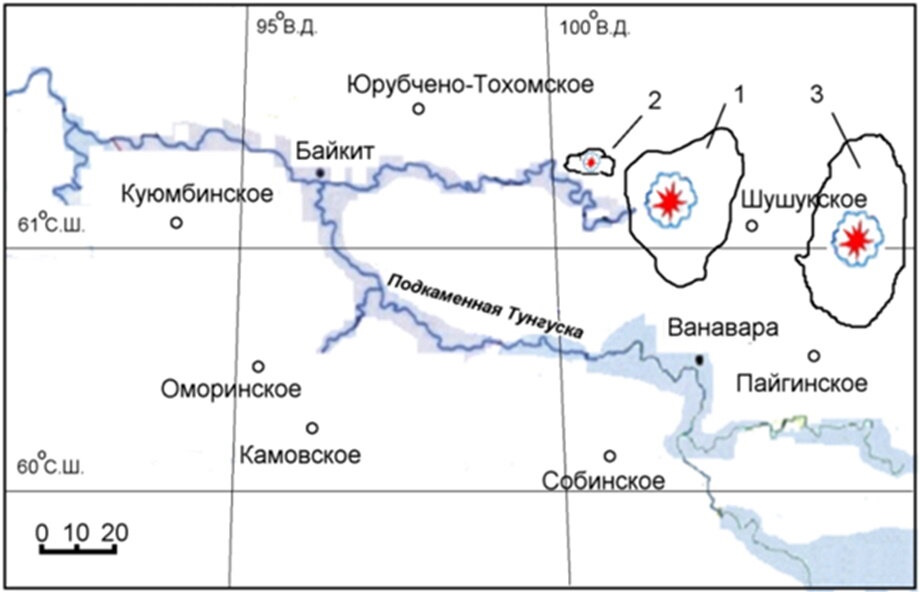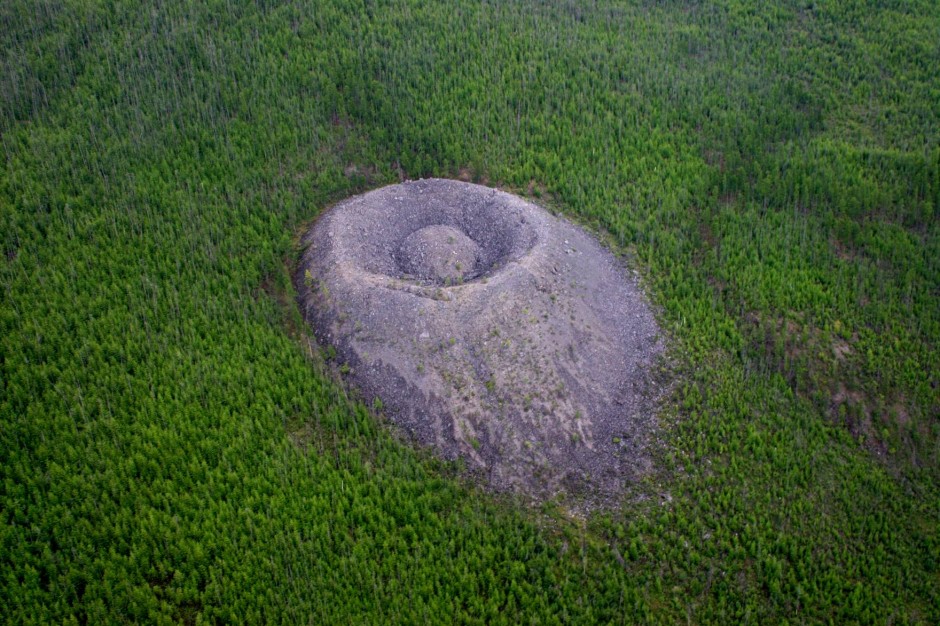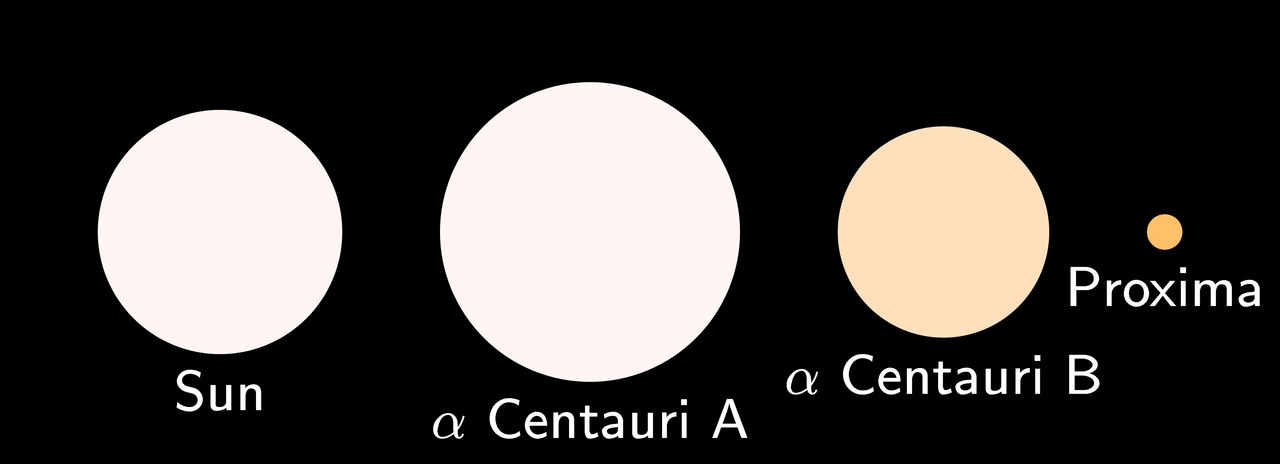
A hypothesis of The Tunguska event is proposed as a process of emergence of a new mass from wave form of matter. An experiment is described that allows to prove the identity of the Tunguska phenomenon mechanism and emergence of new stellar systems. This involves detecting and studying of matter concentration waves from the Tunguska explosion, which should obey the Titius-Bode law.
And the earth was without form, and void;
and darkness was upon the face of the deep.
Genesis 1:1-2
Contents
Another hypothesis of The Tunguska event.
There are several dozen hypotheses about what happened in the Podkamennaya Tunguska basin on June 17, 1908, but none of them capable simultaneously explain all the features of this phenomenon. A.I. Woitsekhovsky, in his famous 1991 book about the Tunguska explosion, wrote that “world science turned out to be powerless in the face of the scale, unusualness and complexity of this mysterious phenomenon”. An attempt below tries not only to explain the mechanism of the Tunguska phenomenon, but also to provide a specific plan for its study.
The most interesting and mysterious property of the Tunguska event is the unusually rapid growth of forest at a distance of about 10-15 kilometers around the epicenter. It is possible that such abnormally rapid growth continues today. No natural phenomenon known today can cause such consequences. This effect was studied in detail by Yu.M. Emelyanov and V.I. Nekrasov. In the magazine “Nature” No. 2, 1962 we read:
If before 1908 the annual average growth of trees in diameter was very small, amounting to 0.4-2.0 mm, then for trees grown after 1908 it reaches 6-10 mm. The thickness of the growth rings of larch in some years is 8-9 mm (1942-1943).
The most obvious explanation for this effect is that the substance of the “Tunguska body” fertilized the soil so well that this significantly influenced the biological activity of the trees. The soil in the area of the explosion, as tests have shown, is enriched with bromine, selenium, arsenic, zinc, silver, iodine, and some other rare earth metals. Woitsekhovsky writes in his book that scientists S. Golenetsky, V. Stepanok and D. Murashov prepared a fertilizer whose composition of microelements is close to what they discovered on Podkamennaya Tunguska. The resulting composition was applied to the fields of the “Mir” collective farm in the Tver region and the collective farm named after M. Kutuzov in the Kaluga region. The results of the experiment showed that the increase in potato yield reached 43–47%, and the increase in other biomass (experimental plots sown with cereals and meadow grasses were also treated with the composition) was 5–10 times greater than in the control “unfertilized” plots.

If we assume that millions of tons of fertilizers fell onto the Earth as a result of the Tunguska phenomenon, this conflicts with another important observation. If we analyze the directions in which the fallen trees are located, and also take into account the presence of trunks remaining standing upright at the epicenter, it turns out that the explosion was almost point-like, the source of the explosion should have been no more than tens of meters in size. The energy of the phenomenon is estimated at 10-40 megatons of TNT, which corresponds to a medium-sized hydrogen bomb, but no radiation was detected in the area of the explosion. Where could so much fertilizer come from there?
Modern aerial photography from space has confirmed the presence of several forest falls. The Kulikovsky fallout, which is usually talked about when remembering the Tunguska phenomenon, is not alone. Another “Shishkovsky fallout” was found approximately 150 kilometers east of Kulikovsky in the shape of an oval 30 by 40 kilometers and a small dump with a diameter of 25 kilometers west of Kulikovsky on the Chuvar ridge. The presence of numerous fallouts at once is a serious argument against any meteorite-comet hypothesis, since such an object in some unusual way should have fallen apart into three parts, which then independently exploded at a distance from each other. It is interesting that the Wikipedia article dedicated to the Tunguska phenomenon, focusing on the meteorite hypothesis, completely ignores the fact of many fallouts, not mentioning them at all.

Considering the extremely unusual nature of the accompanying phenomena, it must be assumed that the explanation of the Tunguska phenomenon must also be unusual. Criticizing Pauli’s theory of electron spin, Niels Bohr told him: “Your theory is crazy, but not crazy enough to be true.” Let’s try to consider the Tunguska event hypothesis, which is crazy enough to explain everything at once.
Let us assume that the Tunguska phenomenon is a widespread in nature effect of the emergence of a new mass, and the same effect causes any earthquake, which means that the Tunguska explosion is an “earthquake in the air.” Accompanying effects in both cases, as shown in articles by A.Yu. Olkhovatov, are very similar. It is earthquakes that cause mountains to grow, and not vice versa. An underground process with a well-defined epicenter cannot be caused by tectonic forces and temperature swings. The energy of an average earthquake is identical to the energy of the Tunguska explosion — tens of megatons of TNT.
The possibility of the emergence of a new mass immediately encounters many objections. What about the law of conservation of baryon charge? Modern science knows only one process for the emergence of a new mass — the “Big Bang”, and the synthesis of heavy chemical elements according to modern concepts is possible only under the conditions of the explosion of supernovae and the center of red giants. But neither the “Big Bang” mechanism nor supernova explosions can explain the details of the Tunguska phenomenon. To illustrate my hypothesis, I will make a small sketch that looks more like child scribbles than a serious theory. Such scribbles can help a good mathematician create a rigorous model, if such a model actually exists. It is possible that it will be necessary to operate with octaves from Cayley algebra: three pairs of complex numbers for fundamental interactions and one more pair for curvature of space. So:
The mechanism of the emergence of a new mass.
A photon cannot have a finite “length”, since in this case it must begin somewhere and end somewhere, and this contradicts the condition of continuity and the condition, or rather the absence of boundary conditions in open space. This means that photon must have an infinite length, which has no relation to the quantum mechanical property of the “coherence length”, which is always defined and finite.

In physics, dealing with infinite objects is very difficult and uncomfortable. Infinite length and infinite space are not physical or natural. If we assume that the geometry of our Universe is a simple three-dimensional ball in ordinary four-dimensional Euclidean space, then everything becomes much simpler. In such a Universe, parallel ones always intersect, and if you move strictly in one direction, you will definitely come back. A three-dimensional ball has constant curvature at any point and a finite volume. Ordinary four-dimensional Euclidean space has no relation to the pseudo-Euclidean four-dimensional space of the theory of relativity. A photon in a three-dimensional ball will wrap itself in a circle and cease to be infinite.

This immediately raises the need for photon quantization. From the condition of continuity, only an integer number of wavelengths should fit on the circle, and the transition to another number or stationary state occurs abruptly. In this case, the volume of the Universe will have a decisive influence on the value of Planck’s constant.
Olbers’ photometric paradox is immediately explained, and the redshift turns out to be simply a «gravitational redshift», where the role of gravity is played by the curvature of a three-dimensional ball, which eliminates the need for theories of expanding and exploding Universes. An observer at any point of such a world seems to be like in the center of large black hole. For this observer space curvature increases from zero at his location to infinity on the horizon of the Universe ball. What could be more pleasant for a theoretical physicist than the theory of a finite and stationary Universe? To prove the sphericity of the Earth required the feat of Magellan and his companions. Unfortunately, finding Magellan to prove the sphericity of the Universe is much more difficult.
If the general mathematical solution for a photon has the geometry of a circle, then such a circle does not necessarily have to be the size of the entire Universe. Let us assume that there is another stationary solution for a photon with a circumference of the order of, say, the dimensions of the Patom crater, and such a soliton-like object is capable of moving from one level to another, changing the number of wavelengths that fits on its circumference. Let us assume that the dimensions of the circumference of such an object are as much smaller than the dimensions of the Universe as the curvature of the space of the Universe is less than the curvature caused by the proximity of a local cosmic body or object. For the embryo of an earthquake or the Tunguska explosion, such a body will be the Earth, and for the embryo of a new star system — the center of a young galaxy. It is possible that the shape of the Patom crater reflects the internal structure of such a soliton.
As long as an integer number of waves fit on the circle, then we can talk about a “integer spin”. However, there is another solution that satisfies the condition of continuity, when the wave, having passed along the circle, makes only half a turn. If this soliton-like object goes from a state with an integer number of full waves to this last state, then we could say that the object with “integer spin” turns into a huge super-heavy particle with “half-integer spin”. For objects with half-integer spin, the Pauli exclusion principle becomes valid and such a particle, having lost stability, immediately begins to decay until only stationary solutions remain — photons, protons, neutrons, electrons and neutrinos. As a result of such a cunning process, the entire spectrum of chemical elements of the Mendeleev system may arise. Based on energy considerations, most of the emerging matter should have a minimum of nuclear energy, that is an iron-nickel mixture, which makes up most of the objects in the Solar System, including possibly the Sun.
Methods for studying the Tunguska “body”.
How to find the “body”?
Regardless of the mechanism by which plant fertilizers arose during the Tunguska phenomenon, anomalies in the chemical composition of the soil are quite easy to study. At the first stage, it is necessary to conduct a subtle correlation-statistical comparative analysis for soils in the area of the explosion and similar areas located at a distance when the influence of the explosion can be neglected. Some chemical elements in the soil of the explosion area may have increased concentrations. Particularly interesting is the study of atomic dust of iron and nickel. Despite the fact that more than a hundred years have passed since the explosion, the soil layers dating back to 1908 are well preserved and accessible for study — they are hidden under the younger upper layers. Soil analysis needs to be done over a very large area. In this case, the size and mass of the Tunguska “body” will be an integral characteristic taken over the entire area.
If no anomalous distribution is found, then such research could be ceased and this topic can be closed.
The Tunguska phenomenon and the Alpha Centauri star system.
If you look closely at the map of the fallouts of the Tunguska explosion, you may immediately notice that their relative sizes are approximately equal to the relative size of the stars in the triple system of Alpha Centauri. The Kulikovsky fallout corresponds to Alpha Centauri A, the Shishkovsky fallout corresponds to Alpha Centauri B, and the fallout on the Chuvar ridge corresponds to Alpha Centauri Proxima. It can be assumed that the Tunguska explosion not only demonstrates the fundamental mechanism of the emergence of a new mass from matter of a wave nature, but is a model for the emergence of a triple star system. Unlike an earthquake, a star appears under completely different conditions and on a different scale. In this case, much more fresh mass appears, and the relative scale of the event is determined may be by the difference in the curvature of space caused by the proximity of the Earth and the proximity of young galaxy.

When creating a mathematical model for the emergence of a triple star system, as in the case of the three-body problem, great difficulties can arise. How does it happen that a fertilized egg, instead of beginning its development cycle, first divides into three parts, resulting in the birth of three twins? If we are talking about the single central nature of the process of the emergence of stellar systems, how is it happened that before the cloud of matter from which the central star and planets begin to form, the initial embryo of the process is divided into three parts?
Titius-Bode rings.
There is a way to directly, completely and unambiguously prove that the process underlying the Tunguska event is a phenomenon of the emergence of mass, which also underlies the emergence of any new star system. This proof requires significantly more work than simply analyzing the overall distribution of fertilizers that fell from the sky.

For the planets of the Solar System, there is an Titius-Bode law showing that the average radii of their orbits depend on the ordinal number of the planet. This means that there is a common connection between all the planets, possibly related to the mechanism of their origin. Not a single hypothesis of the origin of planets, including the hypothesis of dust cloud concentration, can explain where the Titius-Bode law comes from. It is interesting that Pluto, which perfectly satisfies this rule, was excluded from the list of planets by the international astronomical community in 2006, and Eris, which also obeys this rule, was never included in the “elite” list. For number “5” of the Titius-Bode law, there is no planet between Mars and Jupiter, but there is enough mass of small asteroids there to correctly mark the place. Interestingly, the Titius-Bode law also holds true for planetary satellites.

If the Titius-Bode law arises from the unity of the stellar systems origin, and the Tunguska explosion models this process, then an accurate analysis of the Tunguska “body” should show the presence of the “body” matter waves in accordance with the Titius-Bode law. If such waves are found, this will provide useful material for creating a rigorous mathematical theory of earthquakes and the emergence of stars. As a bonus, one can try to detect the interference pattern of Titius-Bode waves from different fallouts — Kulikovsky, Shishkovsky and on the Chuvar ridge. If such an interference pattern will be found, it will prove the coherence of all three explosions as parts of a single nucleosynthesis mechanism.
